Themed collection Journal of Materials Chemistry A HOT Papers

New framework of integrated electrocatalysis systems for nitrogen fixation
The novel hybridized and integrated nitrogen fixation system has been demonstrated based on the self-power triboelectric nanogenerators as the power generator, which supplies the new framework for future energy harvesting and conversion.
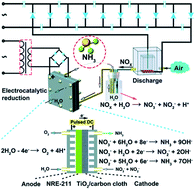
J. Mater. Chem. A, 2022,10, 19506-19517
https://doi.org/10.1039/D2TA02013K
Immobilization strategies for porphyrin-based molecular catalysts for the electroreduction of CO2
Using homogeneous and heterogeneous metalloporphyrin-based catalysts for electroreduction of CO2 to value-added materials.
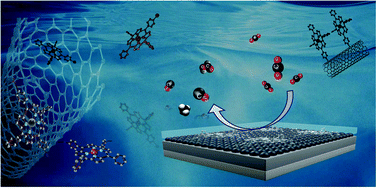
J. Mater. Chem. A, 2022,10, 7626-7636
https://doi.org/10.1039/D2TA00876A
Recent advances in oriented metal–organic frameworks for supercapacitive energy storage
The recent advances in oriented MOFs as electrode materials and solution to poor conductivity as well as random orientations have been discussed.
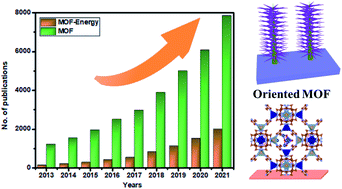
J. Mater. Chem. A, 2022,10, 4475-4488
https://doi.org/10.1039/D1TA10213C
Spatioselective surface chemistry for the production of functional and chemically anisotropic nanocellulose colloids
In this review, we explain the influence and role of the multiscale hierarchy of cellulose fibers in their chemical modifications as exemplified through recent advances in the spatioselective surface chemistry of nanocelluloses.

J. Mater. Chem. A, 2022,10, 23413-23432
https://doi.org/10.1039/D2TA05277F
Recent strategies for activating the basal planes of transition metal dichalcogenides towards hydrogen production
The currently strategies for activating the TMDC basal planes toward hydrogen evolution reaction were summarized, which are divided into internal and external regulation, depending on whether the pristine structure is altered or not.
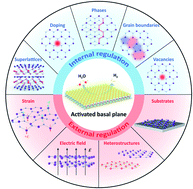
J. Mater. Chem. A, 2022,10, 19067-19089
https://doi.org/10.1039/D2TA02458F
Understanding (photo)electrocatalysis for the conversion of methane to valuable chemicals through partial oxidation processes
The review overviews the mechanism of C–H activation through electron–hole mediated pathways in photo and electrocatalysis, and introduces various strategies to increase the conversion of CH4 as well as the selectivity to desired products.
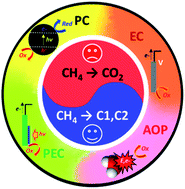
J. Mater. Chem. A, 2022,10, 19107-19128
https://doi.org/10.1039/D2TA02257E
Organic electrolyte design for practical potassium-ion batteries
In this review, recent electrolyte design strategies and progress are given, along with the discussion of relative key features and properties, as well as the practical design and considerations.

J. Mater. Chem. A, 2022,10, 19090-19106
https://doi.org/10.1039/D2TA02223K
Recent advances of non-lithium metal anode materials for solid-state lithium-ion batteries
This review, for the first time, systematically summarizes the application of C, Si, Sn, Bi, metal hydrides and lithium titanate as anode materials in solid-state lithium batteries.
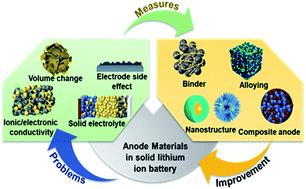
J. Mater. Chem. A, 2022,10, 16761-16778
https://doi.org/10.1039/D2TA03905B
MBenes: progress, challenges and future
The synthesis methods, properties and applications for energy storage and electrocatalysis of MBenes were summarized. Furthermore, discussions and perspectives on the existing problems, major challenges and future development of MBenes were provided.
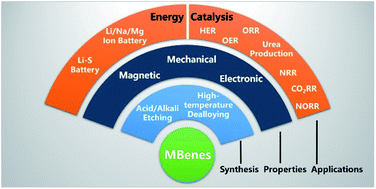
J. Mater. Chem. A, 2022,10, 15865-15880
https://doi.org/10.1039/D2TA03482D
Oxygen vacancies in a catalyst for VOCs oxidation: synthesis, characterization, and catalytic effects
This review about the recent advances in oxygen vacancies for catalytic oxidation of volatile organic compounds considers the construction strategies, characterization methods and catalytic effects of oxygen vacancies in catalysts.
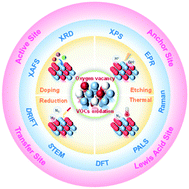
J. Mater. Chem. A, 2022,10, 14171-14186
https://doi.org/10.1039/D2TA03180A
Rational design of integrated electrodes for advancing high-rate alkaline electrolytic hydrogen production
The rational design of integrated electrodes and the strategies for improving their performances are reviewed to advance high-rate alkaline water electrolysis. Such electrodes could be extended for other emerging electrocatalytic hydrogen production systems.
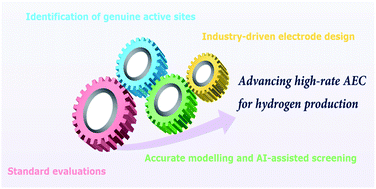
J. Mater. Chem. A, 2022,10, 12764-12787
https://doi.org/10.1039/D2TA02374A
Lead-free hybrid perovskite photocatalysts: surface engineering, charge-carrier behaviors, and solar-driven applications
Lead-free hybrid perovskites (LFHPs) have sparked considerable research interest in photocatalysis. This review introduces the surface engineering and photophysical behaviors of LFHPs for diverse solar-induced photocatalytic applications.
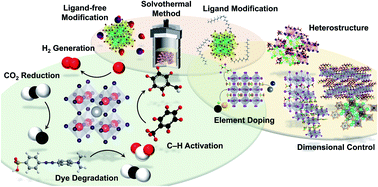
J. Mater. Chem. A, 2022,10, 12296-12316
https://doi.org/10.1039/D2TA01170K
Double network hydrogels for energy/environmental applications: challenges and opportunities
Since the advent of double network (DN) hydrogels nearly 20 years ago, they have flourished as smart soft materials.
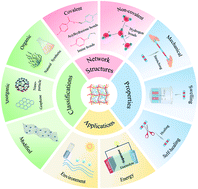
J. Mater. Chem. A, 2022,10, 9215-9247
https://doi.org/10.1039/D2TA00540A
Recent advances in various applications of nickel cobalt sulfide-based materials
In this review, we focus on the recent applications of Ni–Co–S materials (NCSs) in energy storage devices, electrocatalysis, photocatalysis, sensors and microwave absorption, and highlight the intercommunity of NCSs in different application fields.

J. Mater. Chem. A, 2022,10, 8087-8106
https://doi.org/10.1039/D2TA00305H
Recent progress and advances in electrochromic devices exhibiting infrared modulation
This review provides a route for constructing advanced IR-ECDs towards real-world applications in smart windows, IR sensors, thermal control and military camouflage.
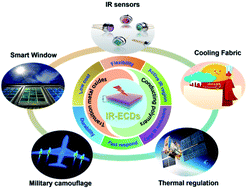
J. Mater. Chem. A, 2022,10, 6269-6290
https://doi.org/10.1039/D1TA10970G
Advancements in organic small molecule hole-transporting materials for perovskite solar cells: past and future
With a special emphasis on chemistry, this study presents a comprehensive review of the various molecular design, structural properties, and organic synthesis of novel small molecule HTMs, as well as their impact on photovoltaic performance.
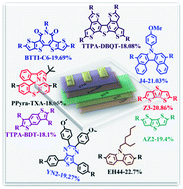
J. Mater. Chem. A, 2022,10, 5044-5081
https://doi.org/10.1039/D1TA11039J
Challenge-driven printing strategies toward high-performance solid-state lithium batteries
Printing techniques promote the development of solid-state batteries by constructing high performance cathodes, dendrite-free anodes, and ideal solid-state electrolytes with versatile structures and configurations.
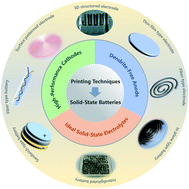
J. Mater. Chem. A, 2022,10, 2601-2617
https://doi.org/10.1039/D1TA09322C
Non-lithium-based metal ion capacitors: recent advances and perspectives
A comprehensive overview of the research progress toward non-lithium metal ion capacitors, including the mechanisms, electrode materials, electrolytes, and novel device designs, is presented with further perspectives.
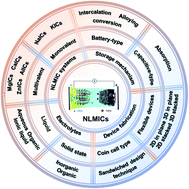
J. Mater. Chem. A, 2022,10, 357-378
https://doi.org/10.1039/D1TA09119K
Structural design and mechanism analysis of hierarchical porous carbon fibers for advanced energy and environmental applications
The progress in the synthesis of porous carbon fibers and their performance improvement mechanisms for energy and environmental applications are comprehensively reviewed, providing guidelines for the future development of this emerging material.
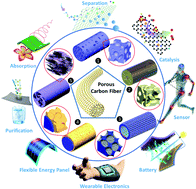
J. Mater. Chem. A, 2022,10, 10-49
https://doi.org/10.1039/D1TA08646D
A highly-active Zn0.58Co2.42O4 spinel oxide as a promising cathode for proton-conducting solid oxide fuel cells
The highly-active and chemically stable Zn0.58Co2.42O4 cathode allows a record-high fuel cell performance for proton-conducting solid oxide fuel cells using spinel oxide cathodes.

J. Mater. Chem. A, 2022,10, 25437-25445
https://doi.org/10.1039/D2TA07229G
WO2 nanoparticles with oxygen vacancies: a high-efficiency electrocatalyst for the conversion of nitrite to ammonia
Monoclinic WO2 nanoparticles with oxygen vacancies are efficient for electrochemical NO2− reduction to NH3, offering an NH3 yield rate of 14 964.25 ± 826.06 μg h−1 cm−2 and a faradaic efficiency of 94.32 ± 1.15%.
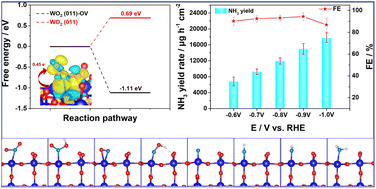
J. Mater. Chem. A, 2022,10, 24969-24974
https://doi.org/10.1039/D2TA07523G
Simultaneous improvement of efficiency and stability of inverted organic solar cell via composite hole transport layer
A novel composite hole transport layer is developed by combining 2PACz with MoO3. Inverted OSCs with the highest efficiency of 18.49% were achieved, which was much higher than that of the control device based on a MoO3 HTL (17.46%).

J. Mater. Chem. A, 2022,10, 23973-23981
https://doi.org/10.1039/D2TA07022G
Synergistic co-doping induced high catalytic activities of La/Fe doped Co3O4 towards oxygen reduction/evolution reactions for Zn–air batteries
La/Fe co-doped Co3O4 nanoparticles supported on aminated CNTs have shown high catalytic activities for the ORR and OER. The specific La/Fe co-doped structure of Co3O4 is shown to be the main origin of their high catalytic activities.
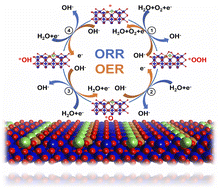
J. Mater. Chem. A, 2022,10, 23483-23493
https://doi.org/10.1039/D2TA06726A
Chemical–physical synergistic etching enabling deep reconstruction of NiFe Prussian blue analogue for efficient oxygen evolution reaction and Zn–air batteries
Chemical–physical synergistic etching enables the deep reconstruction of NiFe PBA into NiOOH/FeOOH nanoboxes, exhibiting superb OER performance. The NiOOH/FeOOH nanoboxes-based ZABs deliver excellent electrochemical performance.
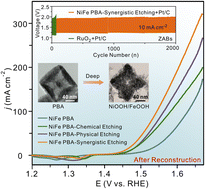
J. Mater. Chem. A, 2022,10, 21251-21259
https://doi.org/10.1039/D2TA06930J
On-demand catalyst-regulated distinctive topological transformations in a dynamic covalent network
Two distinctive kinetics-controlled topological transformations were realized on-demand in a dynamic covalent network via a photo-switchable catalyst.
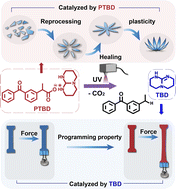
J. Mater. Chem. A, 2022,10, 20242-20247
https://doi.org/10.1039/D2TA05256C
Oriented construction of efficient intrinsic proton transport pathways in MOF-808
An oriented strategy to build efficient intrinsic proton transport pathways in MOF-808 by functionalizing the MOF skeleton has been proposed.
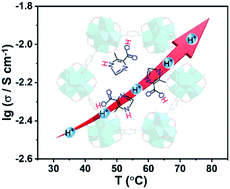
J. Mater. Chem. A, 2022,10, 18592-18597
https://doi.org/10.1039/D2TA04572A
Efficient and scalable perovskite solar cells achieved by buried interface engineering
Tetrachloroaluminate anions doped in a poly(triarylamine) layer can improve the wettability of perovskite precursor solution and passivate interfacial trap defects at buried interfaces.

J. Mater. Chem. A, 2022,10, 18014-18020
https://doi.org/10.1039/D2TA04381E
One-shot transformation of ordinary polyesters into vitrimers: decomposition-triggered cross-linking and assistance of dynamic covalent bonds
One-shot transformation of ordinary polyesters into vitrimers is demonstrated, based on a novel cross-linking mechanism involving three distinct steps of hydrolysis, epoxy-opening, and trans-esterification reactions.
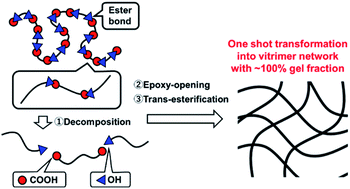
J. Mater. Chem. A, 2022,10, 17406-17414
https://doi.org/10.1039/D2TA04110C
A novel polyelectrolyte-based artificial light-harvesting system for photocatalysis of cross-dehydrogenation coupling
Using polyelectrolyte materials, a simple and effective artificial light-harvesting system is constructed. This work promotes the application prospect of artificial light-harvesting system based on polyelectrolyte materials in photocatalysis.

J. Mater. Chem. A, 2022,10, 16390-16395
https://doi.org/10.1039/D2TA04124C
Rationally regulating the terminal unit and copolymerization spacer of polymerized small-molecule acceptors for all-polymer solar cells with high open-circuit voltage over 1.10 V
Two polymerized small molecule acceptors with wide bandgaps of ∼1.65 eV and high-lying LUMO energy levels above −3.70 eV were designed by introducing a novel terminal unit. Efficient all-PSCs with high VOC over 1.10 V were achieved.
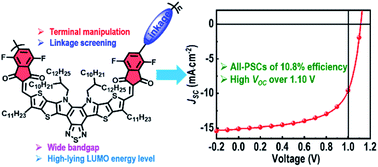
J. Mater. Chem. A, 2022,10, 15932-15940
https://doi.org/10.1039/D2TA03647A
Modulating surface charges of bismuth tantalum oxychloride nanoplates for promoting photogenerated charge separation
Modulation of anisotropic facets and surface charge properties of semiconductor photocatalysts play significant roles in accelerating the photogenerated charge separation in heterogeneous photocatalysis.
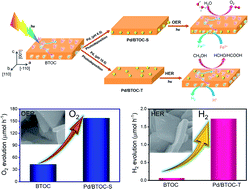
J. Mater. Chem. A, 2022,10, 14293-14299
https://doi.org/10.1039/D2TA03720C
Constructing stable charge redistribution through strong metal–support interaction for overall water splitting in acidic solution
A method through the SMSI and heterostructure of Pt–RuO2@KB to construct a stable charge redistribution is first proposed, showing superior overall water splitting performance, with excellent intrinsic activity, catalytic activity and stability in 0.1 M HClO4 electrolyte.
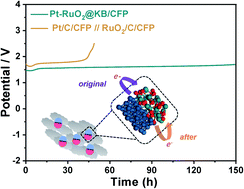
J. Mater. Chem. A, 2022,10, 13241-13246
https://doi.org/10.1039/D2TA02742A
Highly efficient oxygen evolution catalysis achieved by NiFe oxyhydroxide clusters anchored on carbon black
The NiFe-oxyhydroxide/C OER catalyst is prepared through the hydrolysis of nickel and iron salts in the presence of carbon black. It exhibits an overpotential of 269.6 mV at 10 mA cm−2 and a mass activity of 593.1 A g−1 at an overpotential of 320 mV.

J. Mater. Chem. A, 2022,10, 10342-10349
https://doi.org/10.1039/D2TA01931K
Duetting electronic structure modulation of Ru atoms in RuSe2@NC enables more moderate H* adsorption and water dissociation for hydrogen evolution reaction
With a duetting electronic structure modulation of Ru atoms, H* adsorption and water dissociation energies are optimized, allowing RuSe2@NC catalysts with higher HER activity than that of Pt catalysts and promising industrial-scale applications.
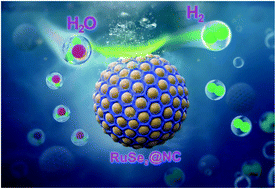
J. Mater. Chem. A, 2022,10, 7637-7644
https://doi.org/10.1039/D2TA01032A
Stabilizing atomically precise metal nanoclusters as simultaneous charge relay mediators and photosensitizers
Atomically precise metal nanoclusters (NCs) are judiciously stabilized as simultaneous charge relay mediators and photosensitizers for photocatalytic organic transformation.
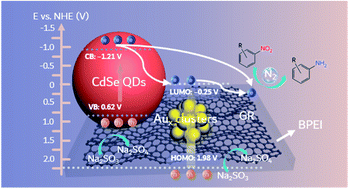
J. Mater. Chem. A, 2022,10, 7006-7012
https://doi.org/10.1039/D2TA00572G
Coupling denitrification and ammonia synthesis via selective electrochemical reduction of nitric oxide over Fe2O3 nanorods
Fe2O3/CP acts as an electrocatalyst enabling efficient NH3 generation via NO reduction, capable of attaining a faradaic efficiency of 86.73% and an NH3 yield of 78.02 μmol h−1 cm−2. The Fe2O3-based Zn–NO battery offers a power density of 1.18 mW cm−2.
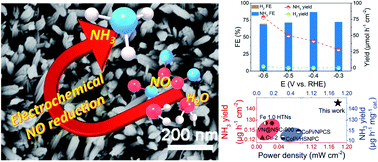
J. Mater. Chem. A, 2022,10, 6454-6462
https://doi.org/10.1039/D2TA00744D
Incorporation of free halide ions stabilizes metal–organic frameworks (MOFs) against pore collapse and renders large-pore Zr-MOFs functional for water harvesting
The incorporation of free halide ions into MOF-808 makes it a promising water-harvesting material with high working capacity and good cycle stability.
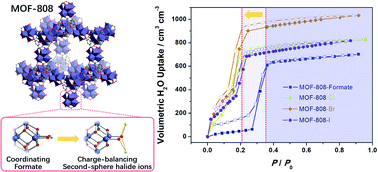
J. Mater. Chem. A, 2022,10, 6442-6447
https://doi.org/10.1039/D1TA10217F
Cu clusters/TiO2−x with abundant oxygen vacancies for enhanced electrocatalytic nitrate reduction to ammonia
10Cu/TiO2−x exhibits outstanding electrocatalytic performance toward nitrate reduction to ammonia due to the abundant oxygen vacancies at the interface.

J. Mater. Chem. A, 2022,10, 6448-6453
https://doi.org/10.1039/D2TA00661H
Engineering of the alkyl chain branching point on a lactone polymer donor yields 17.81% efficiency
Near-backbone manipulation of the alkyl chain branching point yields an efficient polymer donor L3 for organic solar cells.

J. Mater. Chem. A, 2022,10, 3314-3320
https://doi.org/10.1039/D1TA10233H
Magnetron sputtering tuned “π back-donation” sites over metal oxides for enhanced electrocatalytic nitrogen reduction
Herein, Ni3+ and oxygen vacancies were synergistically integrated on NiO@TiO2 by magnetron sputtering, providing nearly 10-fold higher yield and faradaic efficiency.
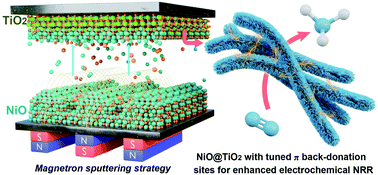
J. Mater. Chem. A, 2022,10, 2800-2806
https://doi.org/10.1039/D1TA10273G
“All-in-one” hypergolic metal–organic frameworks with high energy density and short ignition delay
A type of all-in-one hypergolic MOF has been described, in which CTB ligands as triggers impart active sites for the ignition reaction and imidazole ligands with different substituent groups as bandgap mediators could optimize the hypergolicity.
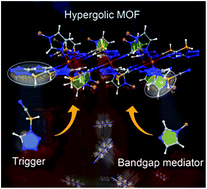
J. Mater. Chem. A, 2022,10, 2795-2799
https://doi.org/10.1039/D1TA10126A
Introducing oxophilic metal and interstitial hydrogen into the Pd lattice to boost electrochemical performance for alkaline ethanol oxidation
Stable PdCoH nanosheets for efficient EOR were designed by introducing oxophilic metal cobalt and interstitial hydrogen into the Pd lattice. The synergistic effect of Co and H atoms boosts EOR performance with high CO tolerance and C1 selectivity.

J. Mater. Chem. A, 2022,10, 1735-1741
https://doi.org/10.1039/D1TA08924B
Triggering interfacial activity of the traditional La0.5Sr0.5MnO3 cathode with Co-doping for proton-conducting solid oxide fuel cells
Doping the Co element into the traditional La0.5Sr0.5MnO3−δ cathode material triggers the activity of the cathode/electrolyte interface in the composite cathode, leading to impressively high cell performance for proton-conducting solid oxide fuel cells.
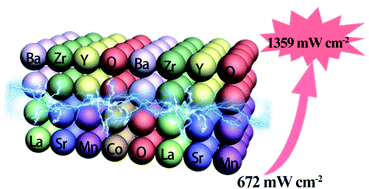
J. Mater. Chem. A, 2022,10, 1726-1734
https://doi.org/10.1039/D1TA09450E
Probing heat generation and release in a 57.5 A h high-energy-density Li-ion pouch cell with a nickel-rich cathode and SiOx/graphite anode
This study clarifies the heat generation and release of a 57.5 Ah HED (266.9 W h kg−1) Li-ion cell with a nickel-rich cathode and SiOx/graphite anode. Significant heat accumulation and delayed heat release effects in large-format cells are uncovered.

J. Mater. Chem. A, 2022,10, 1227-1235
https://doi.org/10.1039/D1TA08597B
Self-templated construction of peanut-like P3-type K0.45Mn0.5Co0.5O2 for highly reversible potassium storage
Uniform peanut-like P3-type K0.45Mn0.5Co0.5O2 hierarchical microparticles are fabricated through an elegant self-templating method, demonstrating enhanced potassium storage performance.
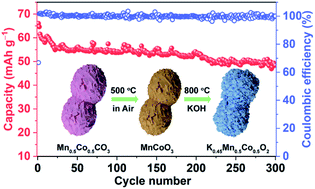
J. Mater. Chem. A, 2022,10, 554-560
https://doi.org/10.1039/D1TA09739C
Enabling technologies for the continuous electrically driven conversion of CO2 and water to multi-carbon products at high current densities
We report a soft-templating method for the synthesis of high surface area nickel phosphide catalyst (Ni2P). Ni2P exhibits a 40–50% CO2 reduction products selectivity over H2 formation at current densities ranging from 50–300 mA cm−2 in a flow cell.
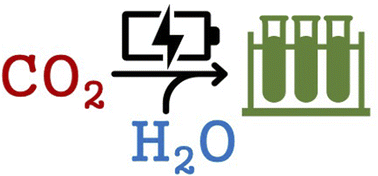
J. Mater. Chem. A, 2023,11, 717-725
https://doi.org/10.1039/D2TA08173C
Porous ZnIn2S4 with confined sulfur vacancies for highly efficient visible-light-driven photocatalytic H2 production
A porous ZnIn2S4 photocatalyst rich in sulfur vacancies shortens the charge transfer pathway, rapidly capturing the photogenerated electrons, which enhances the separation and migration ability of photoexcited charge carriers, thus enhancing photocatalytic H2 evolution.

J. Mater. Chem. A, 2022,10, 25586-25594
https://doi.org/10.1039/D2TA07302A
Inspired by the Cu-driven conversion reaction: how anionic properties dictate the electrochemical performance of vanadium sulfide
The anionic properties of electrolytes play a significant role in determining the electrochemical performance of VS2/SNC anodes, which is interpreted from the angle of solvation effect and corresponding electrode/electrolyte interface properties.
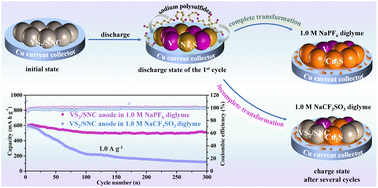
J. Mater. Chem. A, 2022,10, 25575-25585
https://doi.org/10.1039/D2TA07832E
Ultrathin IrRu nanocages with tunable electronic reciprocity for highly efficient water splitting in acidic media
Ultrathin IrxRu1−x cubic nanocages with precisely controlled atom accuracy of six atomic layers and well-defined {200} facets exhibit significantly low overpotential for the HER and OER in acidic medium.
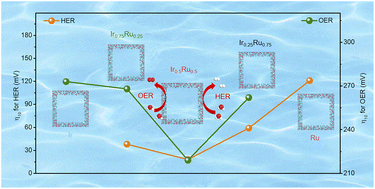
J. Mater. Chem. A, 2022,10, 25556-25563
https://doi.org/10.1039/D2TA08066D
Fe hotspots in the Ni–Ni3B nanocatalyst unravel remarkable cooperativity to boost hydrogen production from ammonia borane with enzyme-like catalysis
Fractional Fe incorporation in Ni–Ni3B furnishes a nanocatalyst that cooperatively enhances hydrogen production from ammonia borane following enzyme-like kinetics.
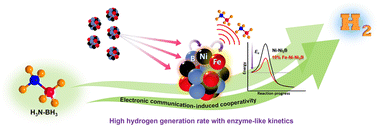
J. Mater. Chem. A, 2022,10, 25490-25499
https://doi.org/10.1039/D2TA05465E
Stretchable strain sensor of composite hydrogels with high fatigue resistance and low hysteresis
A stretchable hydrogel sensor has been developed with a high fatigue threshold, low hysteresis, and high resolution of strain sensing capability.
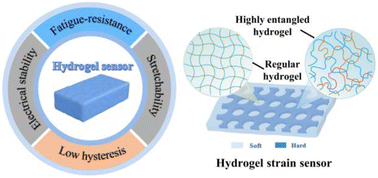
J. Mater. Chem. A, 2022,10, 25564-25574
https://doi.org/10.1039/D2TA07447H
Toughened, self-healing and self-adhesive conductive gels with extraordinary temperature adaptability for dual-responsive sensors
Synopsis: a versatile conductive elastomer with broad and long-term temperature tolerance for dual-responsive sensors.

J. Mater. Chem. A, 2022,10, 25527-25538
https://doi.org/10.1039/D2TA07961E
Stabilizing the Li1.4Al0.4Ti1.6(PO4)3/Li interface with an in situ constructed multifunctional interlayer for high energy density batteries
A multifunctional interlayer with Mg, LiF, and Li3N has been in situ constructed on the surface of LATP via a facile drop-casting method, which restrains the decomposition of LATP and improves the interfacial stability during cycling.

J. Mater. Chem. A, 2022,10, 25500-25508
https://doi.org/10.1039/D2TA07783C
Salt engineering toward stable cation migration of Na metal anodes
KFSI salt as an additive in electrolyte can enable highly reversible and nondendritic plating–stripping of Na metal anodes.
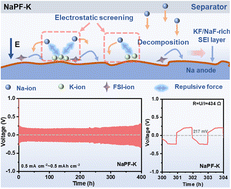
J. Mater. Chem. A, 2022,10, 25539-25545
https://doi.org/10.1039/D2TA08187C
A pairwise/sandwich-like assembly consisting of a TaO3 nanomesh and reduced graphene oxide for a pelletized self-supported cathode towards high-areal-capacity Li–S batteries
A pelletized self-supported cathode based on a pairwise/sandwich-like assembly of a TaO3 nanomesh and reduced graphene oxide for high-areal-capacity Li–S batteries.

J. Mater. Chem. A, 2022,10, 25481-25489
https://doi.org/10.1039/D2TA07139H
A multifunctional cathode sodiation additive for high-performance sodium-ion batteries
1,2,4-Triazole sodium is used as a multifunctional cathode sodiation additive in full-cells, which achieves a NaF-rich cathode electrolyte interface and also inspires a facile method to prepare free-standing electrodes.

J. Mater. Chem. A, 2022,10, 25546-25555
https://doi.org/10.1039/D2TA07910K
A solar-powered interfacial evaporation system based on MoS2-decorated magnetic phase-change microcapsules for sustainable seawater desalination
We have developed a novel type of solar-powered interfacial evaporation system based on MoS2-decorated magnetic phase-change microcapsules for highly efficient seawater desalination and wastewater purification under intermittent solar illumination.
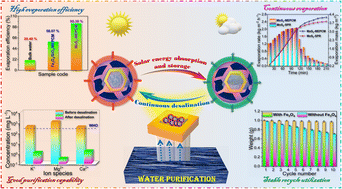
J. Mater. Chem. A, 2022,10, 25509-25526
https://doi.org/10.1039/D2TA07353F
A strategy to enhance recyclability of degradable block copolymers by introducing low-temperature formability
Block copolymers composed of poly(trimethylene carbonate) and polylactide can be processed at ambient temperature under pressure by a reversible pressure-induced phase transition between an ordered (solid) state and a disordered (melt/solid) state.

J. Mater. Chem. A, 2022,10, 25446-25452
https://doi.org/10.1039/D2TA06036A
Synergistic effect of oxygen vacancy and dual electrocatalysts in activating anion redox in lithia-based cathodes
The synergistic combination of oxygen vacancies, dual OER/ORR catalysts, and the complementary catalyst with oxygen-mediating capability in the Co3O4/Ru–CeO2/Li2O2−x successfully activated reversible anion redox reaction in lithia-based cathodes.

J. Mater. Chem. A, 2022,10, 25055-25062
https://doi.org/10.1039/D2TA07674H
Giant power factor and high air stability in an n-type metal–organic charge-transfer complex
We report an n-type metal–organic complex (Br–C6H4–NH2)2CuBr2. This substance uniquely combines giant power factor, ultrahigh electrical conductivity, high electron mobility, remarkable air stability, easy synthesis, and cheap laboratory procedures.
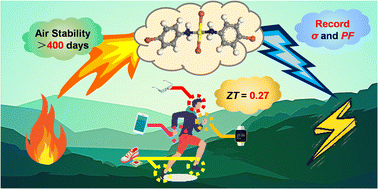
J. Mater. Chem. A, 2022,10, 25019-25028
https://doi.org/10.1039/D2TA07409E
Vacancy-controlled quaternary sulfide Na3−xZn1−xGa1+xS4 with improved ionic conductivity and aqueous stability
Na3ZnGaS4 is a new class of Na+-conducting solid electrolytes. Herein, vacancies are introduced into Na(2) sites by adjusting the Zn/Ga ratio. The conductivity of vacancy-incorporated Na2.8Zn0.8Ga1.2S4 is increased by more than two orders of magnitude.
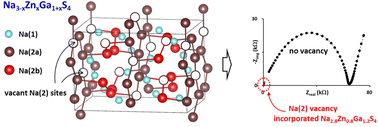
J. Mater. Chem. A, 2022,10, 25039-25046
https://doi.org/10.1039/D2TA08011G
A glutamate anion boosted zinc anode for deep cycling aqueous zinc ion batteries
A dilute glutamate anion is introduced to form an in situ SEI-protected Zn anode, it exhibits stronger corrosion resistance and more nucleation sites, leading to superior reversibility of Zn plating/stripping and remarkable cycle stability.

J. Mater. Chem. A, 2022,10, 25029-25038
https://doi.org/10.1039/D2TA06975J
An accurate “metal pre-buried” strategy for constructing Ni–N2C2 single-atom sites with high metal loadings toward electrocatalytic CO2 reduction
Ni–N2C2 SACs were obtained by the cleavage of Ni–O bonds and formation of Ni–C bonds.

J. Mater. Chem. A, 2022,10, 25047-25054
https://doi.org/10.1039/D2TA07135E
A photofunctional platform of bis-terpyridine ruthenium complex-linked coordination polymers with structural diversity
A family of novel coordination polymers (CPs) with topological diversity has been prepared based on a bis-terpyridine ruthenium linker. They provide a unique platform for the development of multifarious photofunctions.

J. Mater. Chem. A, 2022,10, 25063-25069
https://doi.org/10.1039/D2TA07219J
A flexible and stable zinc-ion hybrid capacitor with polysaccharide-reinforced cross-linked hydrogel electrolyte and binder-free carbon cathode
A flexible and stable zinc-ion hybrid capacitor has been fabricated with a polysaccharide-reinforced hydrogel electrolyte and binder-free carbon fabric cathode, and displays an impressive cycling performance with a capacity retention of 93.5% over 10 000 cycles as well as high energy/power density of 113.2 W h kg−1/15752.4 W kg−1.

J. Mater. Chem. A, 2022,10, 24639-24648
https://doi.org/10.1039/D2TA06985G
Ultra-durable and flexible fibrous mild quasi-solid-state Ag–Zn batteries with Na2SO4 electrolyte additive
The synergistic effect of Cl− ion stabilizing the Ag cathode , the Na+ ion regulating the Zn deposition and the flexibility of carbon nanotube fibers endows fibrous quasi-solid-state mild Ag–Zn batteries with admirable durability and flexibility.

J. Mater. Chem. A, 2022,10, 24708-24716
https://doi.org/10.1039/D2TA07365J
Self-assembly of a heterogeneous microreactor with carbon dots embedded in Ti-MOF derived ZnIn2S4/TiO2 microcapsules for efficient CO2 photoreduction
The assembly of the heterogeneous microreactor is a promising approach for CO2 photoreduction attributed to its abundant microchannel, intimate contact, high exposed surface area, and favorable heat-mass transfer.

J. Mater. Chem. A, 2022,10, 24519-24528
https://doi.org/10.1039/D2TA07217C
N-rich porous carbons with tunable affinity for CO2 adsorption achieve size-sieving CO2/N2 selectivity in turbostratic interlayers
Carbons with varying porosity and N-content exhibit tunable thermodynamics of CO2 adsorption, stemming from synergy between confinement and surface chemistry. Further, size-sieving CO2/N2 adsorption selectivity occurs in sub-nanoscale interlayers.

J. Mater. Chem. A, 2022,10, 24649-24661
https://doi.org/10.1039/D2TA05911H
Insights into photoinduced carrier dynamics and hydrogen evolution reaction of organic PM6/PCBM heterojunctions
Leveraging electronic structure calculations in combination with ab initio-based non-adiabatic carrier dynamics simulations, insights into photoinduced carrier dynamics and hydrogen evolution reaction of organic PM6/PCBM heterojunctions are revealed.

J. Mater. Chem. A, 2022,10, 24529-24537
https://doi.org/10.1039/D2TA07170C
Significant improvement in high-temperature energy storage performance of polymer dielectrics via constructing a surface polymer carrier trap layer
Deposition of deep-trap, high-temperature-resistant layers by a chemical vapor deposition (CVD) process enables non-destructive and controllable preparation of high-performance high-temperature polymer dielectric films.

J. Mater. Chem. A, 2022,10, 24611-24619
https://doi.org/10.1039/D2TA07214A
About this collection
This on-going web collection features all the articles published in Journal of Materials Chemistry A in 2022 marked as HOT, as recommended by referees. Congratulations to all the authors whose articles are featured!